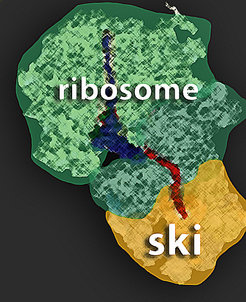RNA jam in molecular 3D printer – SKI complex helps

Although the terms “cryo-EM” and “SKI complex” evoke images of ice and snow, they actually relate to structural biology. Scientists at the Max Planck Institute of Biochemistry and the Gene Center of the University of Munich (LMU) have now shown that the cellular protein factory and the SKI protein complex are in direct contact. The SKI complex is part of a molecular shredder that breaks down mRNA, the construction manual for proteins, into its individual components. To conduct their analysis, the researchers used cryo-electron microscopy, a technique that involves flash-freezing protein complexes to allow even the tiniest details of their structure to be studied in their natural state.
Ribosomes are the molecular protein factories of cells. Following a construction manual – the messenger RNA, or mRNA – they assemble protein building blocks to form chains. These chains are later folded into tiny molecular machines – the proteins. Proteins then perform a variety of tasks in the cells. Roland Beckmann and his team at the Gene Center of the University of Munich (LMU) specialize in investigating the structure of the ribosomes using cryo-electron microscopy. Elena Conti’s group “Structural Cell Biology” at the Max Planck Institute of Biochemistry in Martinsried has been studying the structure and function of the exosome, a shredder for mRNA molecules, for many years. When the protein construction manual is no longer needed, or when it contains an error, the exosome breaks down the mRNA into its basic components and recycles it.
In a joint project between these two groups, scientists at the two institutions have now shown that the SKI protein complex, which serves as the motor for the exosome in breaking down mRNA, is in direct contact with the ribosomes.
